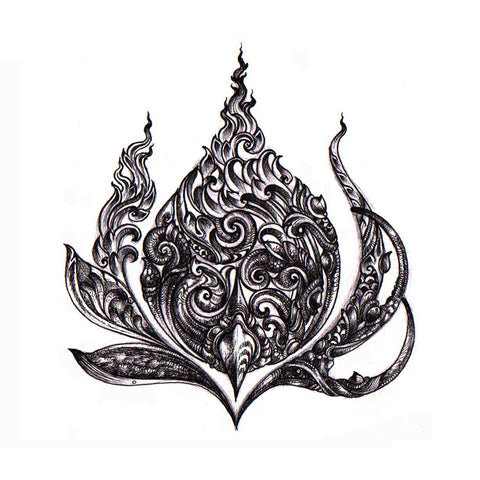The Embodiment of History, Identity and a Sense of Loss - The Kranok

Ancient Thai art is steeped in Buddhist, Indian, Chinese, and bordering Mon-Khmer influences. At the height of ancient Thai art, these influences collectively merged and evolved into a distinctive style of depicting day-to-day life. This particular style of painting is embellished with a characteristic set of patterns, namely the Kranok patterns.
Commonly found on wall murals in temples, historical architecture and scroll-works on furniture fittings that stood the test of time, Kranok motifs used to be ubiquitous in an earlier period of artistic expression that drew inspiration from nature. Imbuing it with qualities such as gentleness and beauty, qualities that were innately associated with the people and culture of that period, the Kranok took on a life and identity of its own. Today, the Kranok motif is more symbolic of a Thai origin than a purposeful extension of an art form, especially when the motif is more commonly found on name cards than houses, and even on signage overseas.
Modern history dictates that industrialization is necessary to keep pace with the rest of the world, forcing myriad of changes along the way, and vastly transformed a former self-sufficient kingdom. For the better qualities that were made obsolete through these changes, the Kranok acts as a nostalgic intermediary between the lacking in a modern developing nation and the longing for the golden age of a legendary kingdom.


Comments
0 Comments